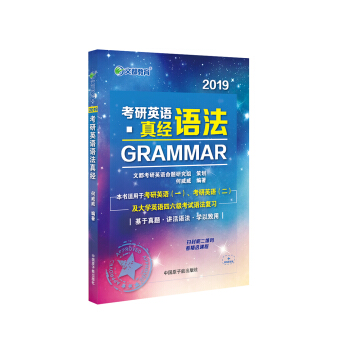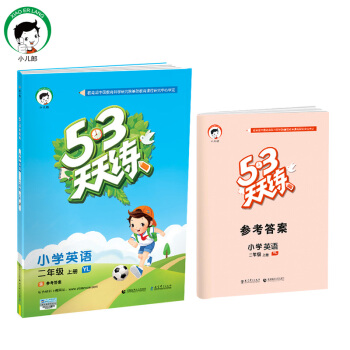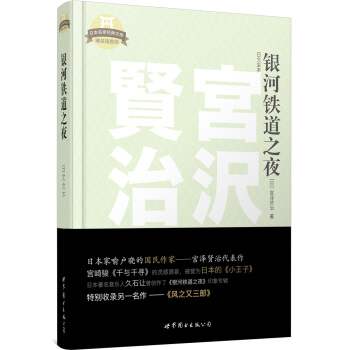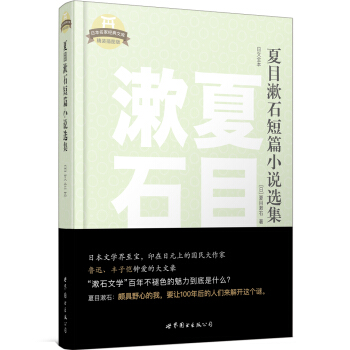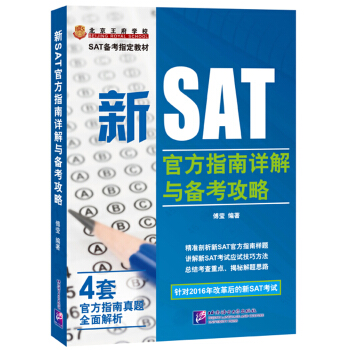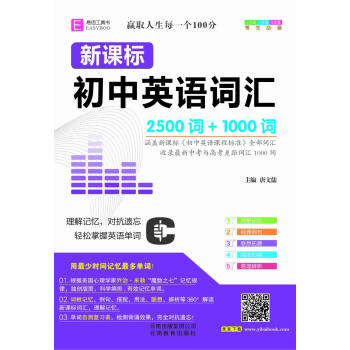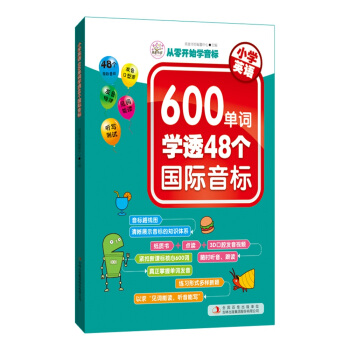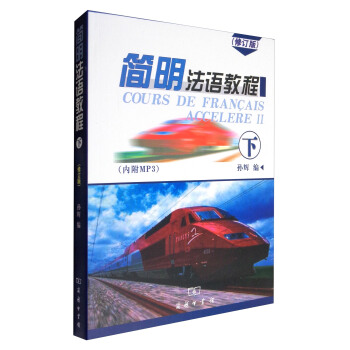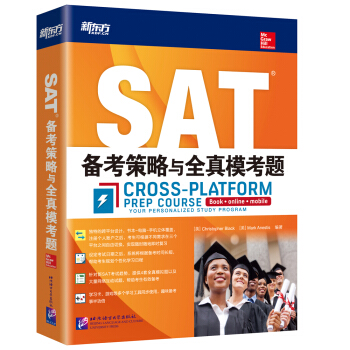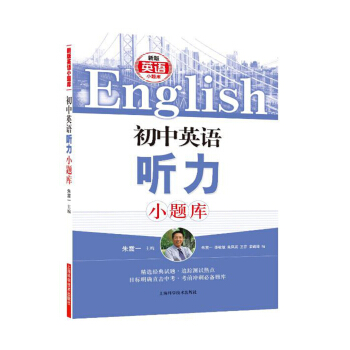

具体描述
编辑推荐
适读人群 :广大读者经典延续、畅销多年,英语学习、中考必备,有了这样一本参考书,将使学生的英语学习成绩大为提高。
内容简介
《新版英语小题库》丛书目前分高中4册、初中4册。目的: 通过对学生的有效指导和训练,逐步提高学生的英语水平。本书是此套丛书中的一本。
本书从“一张图片传达的信息”“一组图片传达的信息”“一篇短文传达的信息”到“一篇对话传达的信息”,对典型例题进行分析,指导学生掌握听力测试的答题技巧。题库通过84个篇章练习的训练达到有效提高听力测试能力的目的。最后附有的听力文本和参考答案,起到为学生释疑解惑的作用。
本书供初中学生使用,也可供广大英语爱好者和教师参考使用。
作者简介
朱震一,资深英语教学专家,特级教师,上海市教育学会外语专业委员会理事。主持上海市徐汇区“朱震一名师工作室”。在闻名全国的上海中学执教三十余载,积累了丰富的英语教学经验,并著书60多本,达700余万字。曾公派澳大利亚昆士兰州从事教学,出访过美国、加拿大、瑞士、德国、法国、俄罗斯等30多个国家。精彩书评
案头这样一册实用有益的参考书,就像一位良师,将使你的学习大为改观。 ——上海深资英语教学专家、特级教师 陈锡麟目录
第一章一张图片传达的信息1 在听力测试中,从一张图片可以捕捉到哪些信息? 第二章一组图片传达的信息12 从一组图片中可以捕捉到哪些信息? 第三章一篇短文传达的信息26 从一篇短文中可以捕捉到的信息有哪些?内容、句型、时态、词汇、语音和语调? 第四章一篇对话传达的信息37 从一篇对话中可以捕捉到哪些信息?不同人物、不同的谈话内容传达的信息有哪些? 第五章综合听力练习54 涵盖了以上听力测试的内容,你答题的正确率能达到多少? 听力文本和参考答案84 每一题都有听力文本和答案吗?是!每一题都有听力文本和答案。精彩书摘
第一章 一张图片传达的信息 在听力中,图片所传达的方方面面信息是我们必须捕捉的。一张简单的图片可以有不同的解读和联想,可以是一句就事论事的说明,也可以是一种复杂的“图外之音”。 我们就下图来说明(暂时不能提供图片): 1. Bill is the goal keeper of our school football team. (就事论事,见啥说啥) 2. We watched an exciting football match last night. (和football有关) 3. We finally won the match. Bill caught the ball successfully in the last minute. (和football有关,讲到了Bill成功接球的场面) 4. Bill likes football very much. He practices a lot every day. (讲Bill怎样苦练足球的“图外之音”) 5. In order to win the final match, Bill tries his best to improve his skills in catching the ball successfully. (长句,讲Bill怎样改进守球技术,赢了决赛) 捕捉一张图片信息的练习: Picture 1: 1. John is proud of his father. He is a policeman. 2. John wants to be a policeman like his father in the future. 3. The policeman asks John never to go out alone next time. 4. John likes to listen to the exciting police stories told by his father. 5. Although Mr. Li is very busy in the police station during the day, he still spends time talking with his son every evening. 第二章 一组图片传达的信息 我们在做图片的听力题时,往往给出的是一组图片。有时是六张图片,有时是七张图片,有时是八张图片,这时的信息会更多。我们的耳朵、眼睛和大脑要同时配合才能对一组图片做出快速的反应。听到的信息要反应到图片,图片的内容要反应到听力文字,文字的意思要反应到大脑。只有完成了这一整个过程,才能把听力题做正确。有时图片的内容比较直接,有时图片的内容比较复杂,这就要靠平时的训练,只有多听、多练才能取得好的学习成果。 现在我们用下组图片来说明: Listen and choose the right picture(根据你听到的内容,选出相应的图片): 1. 2. 3. 4. 5. 6. 这是一组七张图片选六张的练习。图片有人物,有花,也有动物。具体的图片测试文字如下: Listen and choose the right pictures: 1. There is a modern farm far from our school and we sometimes visit it. 2. Look! How wonderfully Grace is dancing! 3. What a beautiful flower it is! 4. Miss Erin is a good teacher. 5. Mr. Clark comes from the U.S.A.. 6. Wan Wan is a lovely dog. 答案: 1. 图片G是一个农场,蓝天白云,有牛有马也有拖拉机,符合所述内容。 2. 图片C是一个女孩子在台上跳舞,符合所述内容。 3. 图片A是漂亮的花朵, 符合所述内容。 4. 图片D是一个外国老师在上课,符合所述内容。 5. 图片E是一个外国人,符合所述内容。 6. 图片F是一条可爱的狗,符合所述内容。 一组图片的练习: 一组图片的练习(1) Listen and choose the right picture(根据你听到的内容,选出相应的图片): 1. 2. 3. 4. 第三章 一篇短文传达的信息 一篇短文传达的信息要比一张图片多得多。短文有各种不同的内容,不同的句型,不同的时态,有时还会有不熟悉的词汇。虽说英语的文本是一样的,但不同的老师会读出不同的语音和语调,英国口音和美国口音又会有不同,所以短文的听力理解要比图片理解难度大。我们主要用填字和缺字练习的方式帮助大家捕捉短文的信息。 现在我们用一首著名的圣诞歌 Santa Claus is coming to town来举例: 歌词原文是: You better watch out, You better not cry, Better not pout, I'm telling you why. Santa Claus is coming to town, He's making a list and checking it twice, Gonna find out who's naughty and nice, Santa Claus is coming to town. He sees you when you're sleeping. He knows when you're awake. He knows if you've been bad or good, So be good for goodness sake, So! You better watch out, You better not cry, Better not pout, I'm telling you why, Santa Claus is coming to town. 我们在可能考到的词下划线,因为歌词的开头和结尾是重复的,所以可能考到的词在歌词的中间: You better watch out, You better not cry, Better not pout, I'm telling you why. Santa Claus is coming to town, He's making a list and checking it twice, Gonna find out who's naughty and nice, Santa Claus is coming to town. He sees you when you're sleeping. He knows when you're awake. He knows if you've been bad or good, So be good for goodness sake, So! You better watch out, You better not cry, Better not pout, I'm telling you why, Santa Claus is coming to town. 我们把歌词中所听到的词,用句子来表示: 1. Before Santa Claus comes from the heaven, he always makes a . 2. Santa Clause wants to find out who is nice and who is . 3. Santa Clause is a great man, and he can see you when you are . 4. When you are , Santa Clause knows you. 5. So, for sake, you�餯 better be a good child. 这个填字练习的答案是: 1. list 2. naughty 3. sleeping 4. awake 5. goodness 听短文,做填字练习:一篇短文的练习(3) Listen to the passage and complete the passage(听录音,完成下列短文): Over a hundred years ago people in London were surprised to see a very unusual boat come sailing up the Thames River. The boat was 1 feet long, flat�瞓ottomed, with big wooden eyes on both sides in the front and was colorfully 2 at the back. People came to know that it was a sailing boat from Fuzhou in distant China. The boat had sailed round up the western coast of Africa, and finally to England. It had 3 fifteen thousand miles — more than half of the distance round the world. Although it was 4, the Chinese were warmly welcomed. The boat carried goods such as silk and tea as well as a number of gifts from the Emperor of China for the Queen of England. People had always mistakenly thought of the Chinese as a people not used to the sea. However, from centuries of trading and sailing in 5 seas, the Chinese had learned how to build good boats and sail them well. The coming of this sailing boat to London 6 once again that the Chinese could sail to any country in the world. 一篇短文的练习(4) Listen to the passage and complete the passage(听录音,完成下列短文): This term will be over in a few days. Some 1 students in No.1 Middle School will take a holiday with their families. Mary came from Canada three years ago. She says that she is traveling back to Canada for a 2 by plane. Linda comes from America. She says that her father will take her to Japan by ship. Bill 3 here from England only a few months ago. He says that he�餷l go to Suzhou and Hangzhou with his friends, for there are places of 4 in China. Tom comes from 5. He has lived in Shanghai for two years, but he hasn't been to the Shanghai 6. So he wants to visit it by bus. He is sure that he can learn a lot there. 一篇短文的练习(5) Listen to the passage and complete the passage(听录音,完成下列短文): What picture do you have of the future? Will life in the future be better, 1 or the same as now? What do you hope about the future? Scientists predict that life will probably be very different in 2050 in all the 2 of activity. First of all, it seems that TV channels will have 3 by 2050. Instead, people will choose a program from a menu and a computer will send the program directly to the television. Then, there will be new kind of TV. Pictures shown on TV will have height, width and depth. By 2050, we will be able to see, 4 and touch the things that we see on television. Water will have become one of our most serious problems. In many places, people use a lot of water to grow fruit and vegetables. The amount of water needed will increase ten times between now and 2050. In transport, cars will run on new, clean fuels and they will go very fast. Cars will have computers to control the speed of the car and there won't be any 5. By 2050, the computer will control the car and drive it to wherever you want. Last but not least, medicine technology will have improved greatly. Today, there are electronic devices that connect directly to the brain to help people to hear. By 2050, we will be able to help 6 and deaf people see and hear. 一篇短文的练习(6) Listen to the passage and complete the passage(听录音,完成下列短文): It is Earth Hour on Thursday evening. People all over the world do something 1. Many people turn off the 2 that time. What are they doing? Let's have an 3. Jimmy usually watches TV in the living room with his parents, but now they are sitting on the bench in the 4 and looking at the stars. His father is telling him a lot about stars. Lucy and her sister Lily usually do their homework in the 5, but now they are making some beautiful wind�瞓ells. The wind 6. “Ding�瞕ing!” “Dong�瞕ong!” The sounds of the bells are very nice. They all have a good time. 一篇短文的练习(7) Listen to the passage and complete the passage(听录音,完成下列短文): Mr. Guppy was a very large man. Life was not easy for him. Mr. Guppy could 1 find clothes big enough. In buses and trains, he couldn't stand up 2. In cars, he couldn't move his legs. These problems were so bad that Mr. Guppy stayed at home most of the time. One day, a friend said, “You spend too much time at home. You should go out more. There's a good 3 in the cinema.” “I can't sit in cinema seats,” Mr. Guppy said. “I'm too big.” “That's no 4,” his friend said. “I'll buy you two tickets. You can get them in the cinema when you go.” When the day came, Mr. Guppy put on his best clothes and went to the cinema. “You have two tickets for me,” he said to the woman in the ticket 5. “My name is Guppy.” “Oh, yes, Mr. Guppy,” the woman said. “Here you are, seat G4 and P12. I'm sorry, you and your friend can't sit together because we are 6 this evening.” Poor Mr. Guppy. He walked out of the cinema and went home. ……前言/序言
从大学毕业,到上海市上海中学教英语,一教就是34年。在这34年中,我每天都在想同一个问题:怎样教英语,同学们才会懂得快,才会用得活,才会记得长久? 英语学习,从理论上来说,是个技术活。有人认为:只要熟了,就能生巧。其实并不然,对我们来说,英语是第二语言。我们在学校学习英语,每个礼拜也只有几个小时。我们没有办法“沉浸在英语的语言环境中”。这就需要老师来“讲道理”“搭结构”,需要同学来“练口语”“做习题”“多阅读”“勤写作”。 当你把“学习英语是为了使用英语”这个道理记住了,教书和读书会变得很有意义。英语,老师一个人并不稀奇,要学生也懂才有意义;老师一个人会讲并不稀奇,要学生也会讲才有意义;老师一个人会写并不稀奇,要学生也会写才有意义。所以,对一个老师来说,要“教会”别人不是一件容易的事。道理应该怎样讲?结构应该怎样搭?口语应该怎样练?习题应该怎样做?文章应该怎样读?作文应该怎样写?但凡听过我课的同学会觉得英语学习是件快乐的事,但凡读过我写的书的同学会认为时间没有白费。把我34年的教学心得写下来,算是一个英语特级教师的心愿。愿大家在英语学习中少走点弯路,多得些体会。 感谢沪上英语教学大师陈锡麟先生为本丛书作审阅和修改。 感谢在上海中学任教的英国文教专家Mr. Nuno Lopes和Mr. Roy Grimes,美国文教专家 Ms. Amy Hutchinson和Ms. Erin McGinley对本丛书提供的宝贵见解。 愿本丛书为大家带来求知的进步和喜悦。 朱震一 2016年2月14日用户评价
作为一个对学习资源有着近乎苛刻要求的家长,我仔细研究了这本书的结构。它最大的特点在于其“模块化”的学习路径,设计得像一套精密的工程蓝图。我发现它并没有急于灌输大量题目,而是将基础的“听音辨形”和“语调重音识别”作为第一阶段的基石。例如,它专门用了一章的篇幅来讲解如何通过说话人的情绪变化(如疑问的上升调、肯定的降调)来判断答案,这是一种非常高级的听力策略,很多成人学习者都会忽略这一点。这本书对听力材料的选择,显示出编者对初中英语考试命题趋势的精准把握,很多题目设计上的陷阱,比如“双重否定”或“转折词”的运用,都被巧妙地融入到对话中,迫使学生必须全神贯注。我的孩子试做了几页后反馈说,虽然一开始感觉有点挑战性,但做完一套后,他感觉耳朵似乎被“拉伸”了一下,变得更灵敏了。这本书的重点似乎不在于让你“做完”多少套题,而在于让你“弄懂”每一句话背后的语言逻辑和听力技巧。
评分说实话,我拿到这本听力材料时,内心是抱着一丝怀疑的,市面上的初中英语听力资料实在太多了,很多都是换汤不换药的陈词滥调。但翻开目录后,我立刻被它严谨的编排结构所吸引。它不是简单地将历年真题堆砌在一起,而是明显划分出了“语音辨识强化”、“情景对话精听”和“学术讲座速记”等几个核心模块,这表明编者对初中阶段学生的认知发展规律有着深入的理解。特别是关于“意群划分”和“连读弱读模仿”的那几页,讲解得异常清晰透彻,甚至用图示的方式解释了声音是如何在口语中被“吞噬”或“融合”的,这比单纯听录音自己琢磨要高效得多。我尝试做了其中一个情景对话模块的练习,发现题目的设置非常贴合日常校园生活的场景,而不是那些生硬、脱离实际的“假场景”。更重要的是,它的配套解析部分做得极为细致,不仅仅给出了正确答案,还针对每个选项给出了详细的“错误原因分析”,这一点对我帮助极大,让我能清楚地知道自己错在哪里,是没听懂某个生词,还是理解了错误的概念。这本书显然是为那些希望从根本上提升听力理解能力,而非仅仅追求短期分数突破的学生准备的。
评分如果用一个词来概括我对这本听力材料的印象,那就是“实战派”。它完全摒弃了那些花里胡哨的装饰和不切实际的理论说教,一切都围绕着如何提高考场上的实际得分率而展开。我特别关注了配套音频的清晰度和真实性,它们听起来非常自然,没有那种经过过度后期处理的机械感,这对于训练学生适应真实考试环境至关重要。书中还穿插了一些“考点透视”的小卡片,用非常精炼的语言总结了某个听力题型中反复出现的固定表达或易混淆词组,这种碎片化的知识点回顾机制,非常适合学生在课间或碎片时间进行巩固。更让我满意的是,它对不同听力场景下的“文化背景”提示做了一定的铺垫,比如涉及到购物、问路等场景时,会提示一些英美文化中的习惯用语,这有助于学生在听到陌生的情境时,能更快地建立心理预期。这本书的编排逻辑清晰,从易到难,循序渐进,对于目标明确、希望在短时间内突破初中听力瓶颈的学生来说,它提供的无疑是一条高效且可靠的路径。
评分这本书的封面设计简约而不失专业感,那种深蓝与白色的搭配,让人一眼就能感受到它的学术气息。我拿到手的时候,首先被它的印刷质量所吸引,纸张的触感很舒服,即便是长时间翻阅也不会感到刺眼,这对于需要反复练习听力的学生来说,无疑是一个巨大的加分项。内容上,我发现它对不同题型的覆盖面做得相当到位,从最基础的对话理解到略复杂的篇章听力,似乎都涵盖进去了。尤其值得称赞的是,它似乎并未局限于单纯的“刷题”模式,而是注重了对听力技巧的培养。例如,书中对速记符号的介绍,以及如何快速捕捉关键词的策略性指导,这部分内容对于我这种在听力中常常抓不住重点的考生来说,简直是雪中送炭。我注意到有些听力材料的语速似乎经过了精心设计,不会一开始就用超快的语速打击学习者的信心,而是逐步递进,让人感觉学习过程是循序渐进、充满希望的。当然,对于配套资源的期待是更高的,我希望它能提供高质量的音频文件,最好是能有不同的发音口音作为补充,以应对未来考试中可能出现的各种情况。总而言之,从初步接触来看,这本教材在设计理念和实用性上都展现出了较高的水准,是值得信赖的备考工具。
评分我对这本书的评价可以用“惊喜”来形容。我之前用过几本号称“权威”的听力书,结果发现里面的很多对话内容都老套得像上世纪八十年代的教材,听起来非常别扭。然而,这本《初中英语听力小题库》在材料的新鲜度和时代感上做得非常出色。我听到了一些关于现代科技、环保理念的话题,这些内容不仅更贴近现在初中生的真实生活,也更符合新课标对拓展学生国际视野的要求。此外,它的难度梯度控制得非常精准。前期的训练题,侧重于基础词汇和简单句型的听辨,能迅速建立学习者的自信心;而越往后走,材料的篇幅开始拉长,信息密度也显著增加,这有效训练了学生的短期记忆能力和快速筛选信息的能力。我尤其欣赏它在“纠错”环节的设计,它提供了一个“听力错题本”的模板,鼓励学生记录下自己听错的句子和不熟悉的词汇,并要求在一段时间后进行“二次复盘”,这种主动学习的设计,远比被动地做完一套题就束之高阁要有效得多。这本书的价值在于它构建了一个完整的听力训练闭环。
相关图书
本站所有内容均为互联网搜索引擎提供的公开搜索信息,本站不存储任何数据与内容,任何内容与数据均与本站无关,如有需要请联系相关搜索引擎包括但不限于百度,google,bing,sogou 等
© 2025 book.coffeedeals.club All Rights Reserved. 静流书站 版权所有




